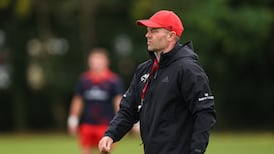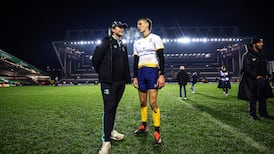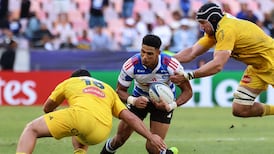All field sports the world over have two key principles; create space and exploit space. On Monday I replayed the match. Not the one you’d imagine but the All Blacks versus France game in Twickenham last Saturday.
Why? Well in an effort to understand the impact of our loss to Argentina I wanted to answer a question that was bugging me all week.
Ma'a Nonu is 108 kg and 182 cm in height. Not dissimilar to Mathieu Bastareaud who is much heavier but only one cm taller. However Nonu is very similar to Manu Tuilagi, England's big ball-carrier.
All three of course are different from Australia's second outhalf and inside centre Matt Giteau. So with Tuilagi and Bastareaud in mind, what would you expect Nonu to do on the ball?
Well he received it 10 times but let’s start off with what he didn’t do; bury the ball under his arm and charge into traffic. He did much more.
Primary aim
I floated the idea of the OODA loop at the beginning of this RWC as a method of differentiating between sides. The primary aim is to create confusion in the opposition particularly where that very opposition has perceived advantages such as bigger, faster players by getting through the four-step transition from observation, through orientation and decision to action.
For eyes-up rugby to work, a player and more importantly a group of players must all observe the same event(s), orientate accordingly, then decide on the best course before acting accordingly.
All this must be done, in most cases, without any form of conversation. Tomorrow watch New Zealand hooker Dane Coles and number eight Kieran Read when a ball is kicked back to their fullback. Watch how they run out into the tram tracks if they are not already there.
Green grass
From there they observe their fullback catching the ball, all orientating towards green grass space; if there’s space they’ll all decide to counter attack and off the fullback will go where Coles and Read will be waiting. The quicker all this happens the more confusion in the opposition’s defensive structures and the more likely one-up tackles being missed as we observed when Argentina imposed their OODA loop upon us.
The figures don’t lie. Ireland had an 88 per cent tackle count success rate against France with 11 missed tackles – that jumped to 27 missed against Argentina.
This is not born from poor tackling but a loop completed quicker than we could cope, causing confusion.
New Zealand had 51 per cent of possession to France’s 49 but outscored France by 9 tries to one; why? New Zealand carried 109 times to France 108 but made 732 to 410 metres; why? All the other stats were as similar where in fact France out-offloaded the All Blacks!
So back to Nonu; he received the ball 10 times, beat six defenders with three clean breaks. But for me the key stats are 107 metres gained and nine passes; precious little contact from the big man. Power yes; but not to batter. Sitting as I was in Wembley for the All Black- Puma game on opening weekend I was fascinated to witness the last thing completed by the All Blacks warm up; old-fashioned four man lateral passing.
For Ireland, it’s contact.
With a core of wonderful players managed by excellent coaches what loop can we develop? I previously noted that various back three units selected during the warm-ups struggled to coordinate.
X-factor players such as Simon Zebo (and Sean Cronin) skip through the OODA loop with remarkable speed arriving to the action phase very quickly. The difficulty for him is that his teammates don't get to the action phase as quickly and balls consequently bounce or go into touch. The result for Zebo; he doesn't make the 23.
Joe Schmidt and his management team have achieved enormously and will continue to do so. Look at the French and, more appropriately, English equivalent.
However team Ireland has a very conservative OODA loop. Of course offloads don’t guarantee success; Tonga, Samoa and Fiji are in the RWC top five but we are 17 from 20 on that table.
Has Schmidt changed in philosophy from his Leinster days? In losing his opening Leinster matches there appeared no panic; in fact what oozed out of him and his team was a total confidence that they would become not just the best passing team in Europe but along the way would dominate Europe.
Has this success and Six Nations success made him a more conservative coach? A victim of his own success. Ireland competed differently when pushing New Zealand very close in Nov 2013 to how they are playing now.
Coaching badges
In the meantime a top down and bottom up question is required. Thousands of coaching badges exist in Spanish soccer; how many in Irish rugby. I have two nephews (one my godson). Both are rugby crazy. One lives in Limerick playing for Old Crescent and the other lives in Dublin playing for Lansdowne. I’ve coached both and both are rugby culturally different. On arriving to Old Crescent I asked the U12s what they would like to do; ‘Rucking and tackling’ was the answer. I did continuity!
Then some time later I asked my nephew in Lansdowne the same question and he answered ‘double rangy skip to score in the corner’. I did continuity. What is continuity (& OODA Loop)? Ma’a Nonu certainly knows. More next Friday, but as homework watch Argentina on Sunday.
liamtoland@yahoo.com












